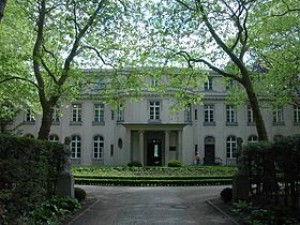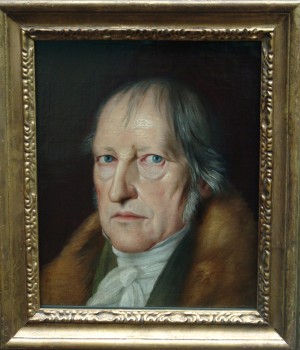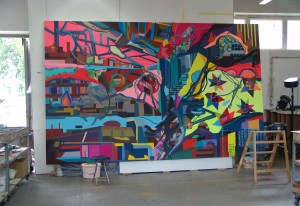Berlin
To a baby boomer like me who grew up in the fifties learning how to crawl under a desk in case of nuclear attacks or being told to watch out for Communists lurking under everyone’s bed, the idea of vacationing in Berlin this past June seemed daunting. Husband Dave and I landed at Tegel Airport, then taxied to a Best Western located in the Mitte section of formerly East Berlin.
Berlin has become a trendy art mecca, artists from all over are encouraged to relocate thanks to German government incentives and inexpensive housing in a city that has reawakened since its wall came down. Most of the art museums and galleries are in East Berlin, and were allowed to deteriorate after World War II.

The Mitte district, conveniently on the subway line, has street cafés and, yes, even McDonalds and Starbucks. Euro 2012, soccer championships to us, was broadcast nightly the week we were there so getting into the spirit was addictive as television monitors were everywhere—TVs on street intersections as well as in gourmet restaurants.
Although pizza and gelato appeared to be foods of choice, Dave and I found a bar called the Boulevard Friedrichstrasse that served sausages and sauerkraut. We enjoyed fading into a nightly crowd who drank beer in tall glasses, smeared their faces with yellow, red and black lipsticks (German colors) and cheered loudly for any team playing.
Art in Berlin can be found in converted hospitals, patrons’ living rooms and neoclassical museums. Looping videos showing ordinary people repeating ordinary tasks and floor installations which transfer found objects into art are the predominant genres.
The Hamburger Bahnhof Museum, a converted train station, has contemporary works by Warhol and Cindy Sherman. British artist Anthony McCall’s “Five Minutes of Pure Sculpture” was a pitch black room where intense light was projected onto the floor from a great height, creating allusive drawings resembling chalk art.
Not surprising, there is a Bauhaus Archive/Museum. This building, designed by architect and school founder Walter Gropius, was exhibiting the Bauhaus’ distinct clean-line chairs and geometrically woven rugs. The Nazis closed the Bauhaus in 1933; this new Bauhaus archive was built by the German government after the war.
In the middle of the Spree River which runs through Berlin is Museum Island, featuring five neo-classical buildings which house Egyptian, Greek and Roman antiquities, followed by European art through the late nineteenth century. The Bode Museum has a giant equestrian statue of Frederick the Great underneath a Great Dome. The Pergamon Museum houses the famed Pergamon Altar, a recreation of a temple that displays the genuine frieze excavated by German engineer Carl Humann from 1878 to 1886, while negotiating with the Turkish government to give him the frieze for Berlin Museums, he won. The famed Nefertiti head has resided in the Neues Museum since 1912, give or take its stay in a salt mine during World War II. This was another clever negotiation that overlooked the cultural heritage of Egypt; yes, they would like her back.
My favorite genre is portraiture, so a stop at the Alte Nationalgalerie Berlin was essential. Nineteenth century German painters went to Italy to study the light patterns found among the olive groves and grapevines. Perhaps heavier handed than their French and Italian masters, these sojourning artists nonetheless produced a Germanic style of Italianate paintings.
Caspar David Freidrich’s landscapes are abundant, but it was a portrait of Hegel that captured my attention. His aesthetic lectures on
fine art are read by students of art history because he was one of the early philosophers who felt art contained more than just surface beauty. Note, the Frye Museum in Seattle has nineteenth century German art much nearer to Alaska.

Germany no longer hides its controversial past as indicated by the fragments of “the wall.” Concrete slabs laden with graffiti can still be found, now tropes of the Cold War as oppose to a killing field. Marks in the pavement that cross courtyards and streets also indicate the former divide between East and West Berlin and remind pedestrians that their freedom to come and go is very new.
The Memorial to the Murdered Jews of Europe, 2005, around the corner from the famed Brandenburg Gate, has over two thousand blocks of uneven concrete illustrating the juxtaposition and ironies of regimentation opposing unbelievable chaos. The Neue Nationalgalerie on Potsdammerstrasse, designed by Mies van der Rohe, had some works from the Cold War era when East Berlin was an urban prison. These blackened/bold pieces, which appeared to have themes about oppression, seemed crudely made and bore a faint resemblance to American WPA murals or the photographs depicting dust-bowl victims.
A subway ride to the Wannsee district of Berlin took Dave and me to artist Max Liebermann’s summer home. Liebermann only briefly enjoyed his stucco/standstone villa overlooking Greater Wannsee Lake. Shortly after he died, the Nazis confiscated the property and used it to house Hitler’s cohorts who were planning the infamous “final solution” in a neighboring villa—now called “House of the Wannsee Conference.” Today, and somewhat surreal, visitors can have tea and cookies overlooking Max Liebermann’s gardens before taking a short walk to see exhibitions about the Holocaust in the conference center where the SS enjoyed guest privileges during the war.
Renowned artist Franz Ackermann’s studio in the outskirts of Berlin is an old factory complex. Ackermann was crating a show as we drank coffee and watched his studio assistants climb ladders, working on upcoming pieces. Ackermann likes to travel and sketch his subjective feelings of places which he calls “mental maps.” His ideas become giant abstracts painted in both oil and acrylic on a cardboard substance that has been laminated onto aluminum. Sometimes he puts big holes in the compositions and then responds to the voids. Amusingly, Ackermann owns a NYPD squad car handsomely displayed in his back yard where wood is pinned and stacked awaiting the table saw, turning the lumber into stretcher bars.
Berlin houses a variety of art, but there is a sense that large blocks of time and art have been lost or erased. German Expressionism, the definitive German genre primarily from the first half of the twentieth century, wasn’t visible in major museums. In spite of Berlin being today’s “in” art mecca, most art themes from the German Italianate to the looped videos in contemporary spaces seemed to be unoriginal, copies from somewhere else.

It is impossible to speak about Berlin without referencing the Brandenberg Gate, a Cold War landmark on the Pariser Platz, now a visitor arena where actors posing as Russian, German and American soldiers hug camera-laden tourists, go figure, who can also hug Mickey Mouse and Darth Vadar. Near the gate, the Adlon Hotel poses as the famed 1907 luxury establishment that entertained the likes of Charlie Chaplin and Marlene Dietrich. I entered the supposed historic lobby and was rudely told to leave. Later I discovered that this Victorian edifice had been totally rebuilt in 1997. It was a charade, and a sad reminder that not all about Berlin has changed. Berlin wasn’t the most exciting art space I have ever visited. But as a baby boomer I felt my visit brought closure to feelings about a place and its past that I had been instructed to buy into. I could now draw my own conclusions.
Next Part: Paris




